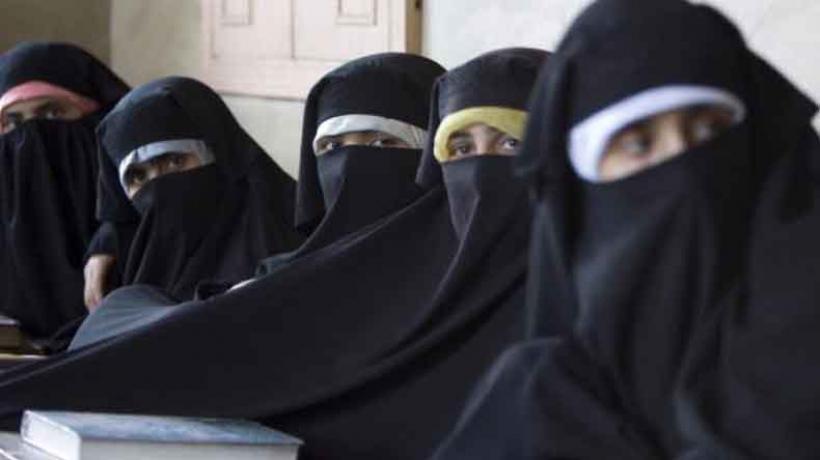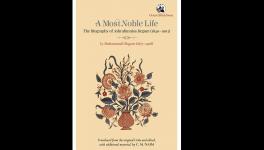The Supreme Court’s Triple Talaq Judgment

Extracts from Gautam Bhatia’s essay on Triple Talaq:
The constitutional status of triple talaq depended, in part, upon its legal status. In particular, there was a dispute over whether triple talaq had been codified into statutory law by the 1937 Muslim Personal Law (Shariat) Application Act. This was important, because all statutes are subject to fundamental rights. However, under existing jurisprudence, uncodified personal law is exempt from fundamental rights scrutiny. Therefore, if the 1937 Act did codify triple talaq, then the Court could examine whether it was consistent with the Constitution. If it did not, however, then the Court would have to ask whether triple talaq was part of Muslim personal law; and if so, whether to uphold its existing jurisprudence exempting personal law from fundamental rights scrutiny, or to reconsider it.
…
A majority of three judges held that the 1937 Act did not codify triple talaq. Beyond that, however, there is no clear majority for any consequential legal proposition in this case (apart from a momentous change on the legal status of the doctrine of arbitrariness, which I shall deal with in a separate post). Justice Kurien Joseph – the “swing vote” in this case – agreed with the dissent that, triple talaq had not been codified by the 1937 Act. This was at odds with the foundation of the judgment of Justices Nariman and Lalit, who held that the 1937 Act did codify triple talaq. However, Justice Joseph then disagreed with the next step in the dissent’s reasoning, which was the proposition that triple talaq was part of Muslim personal law (this, naturally, brought him into agreement with Justices Nariman and Lalit on the issue that triple talaq was not an essential or integral aspect of Islam, and therefore protected under Article 25 of the Constitution). What we therefore get, at the end of the day, is a majority in terms of outcome (3:2), a different majority on the interpretation of the 1937 (3:2) Act, but no majority for the reasoning leading up to the outcome.
…
Justice Nariman held that the plain meaning of Section 2 was that, after 1937, the shariat was accorded statutory sanction in India. Or, to put it in simpler language, after the 1937 Act, what made the shariat legally enforceable in India (as applied to Muslims) was the 1937 Act. Before the 1937 Act, colonial judges were applying and enforcing the shariat (presumably) directly as religious sanctions, drawn from the Quran, the Hadith, and other authoritative texts. The 1937 Act, however, now mediated between Islamic scripture and its application in concrete cases.
…
In other words, if the Court found that the practice instantaneous triple talaq violated any constitutional provision, then to the extent that Section 2 of the 1937 Act authorised it, it would be unconstitutional and void.
This would be true, of course, unless triple talaq was saved by any other constitutional provision. The Muslim Personal Law Board argued that it was saved by Article 25, which guaranteed the freedom of conscience and religion. Justice Nariman rejected this argument, pointing out that under Indian jurisprudence, Article 25 only protected “integral” or “essential” aspects of religion. In view of extensive and uncontroverted religious authority holding that triple talaq was an “irregular” way of conducting divorce, it could not, under any circumstances, be held to be an essential aspect of Islam (or under the Hanafi school of Islam, which practiced it) (paragraph 25).
…
The standard of arbitrariness required that if a law was “disproportionate, excessive… or otherwise manifestly unreasonable“, then it would be struck down under Article 14 (paragraph 45).
It is clear that this form of Talaq is manifestly arbitrary in the sense that the marital tie can be broken capriciously and whimsically by a Muslim man without any attempt at reconciliation so as to save it. This form of Talaq must, therefore, be held to be violative of the fundamental right contained under Article 14 of the Constitution of India. In our opinion, therefore, the 1937 Act, insofar as it seeks to recognize and enforce Triple Talaq, is within the meaning of the expression “laws in force” in Article 13(1) and must be struck down as being void to the extent that it recognizes and enforces Triple Talaq.
…
This case marked an ideal starting point for the Court to jettison this seriously flawed approach, and hold – along with Ambedkar in the Constituent Assembly Debates – that Article 25 simply wasn’t applicable to the laws of marriage, divorce, inheritance, which had a tangible impact upon the civil status of parties; in other words, one cannot, under the cover of religion, claim a vast domain of human life off-limits from constitutional values.
…
There is nothing extraordinary in saying that we ought to strive hereafter to limit the definition of religion in such a manner that we shall not extend beyond beliefs and such rituals as may be connected with ceremonials which are essentially religious. It is not necessary that the sort of laws, for instance, laws relating to tenancy or laws relating to succession should be governed by religion.”
…
It appears to me that – notwithstanding his spirited revival of the doctrine of arbitrariness – Justice Nariman’s constitutionality analysis misplaces priorities. The core problem with instantaneous triple talaq was not its arbitrariness, but how, in giving men a unilateral power of instant divorce, it discriminated against Muslim women. It was more a question of unequal power and inequality (Article 15) than the rule of law (Article 14).
…
“The Holy Quran has attributed sanctity and permanence to matrimony. However, in extremely unavoidable situations, talaq is permissible. But an attempt for reconciliation and if it succeeds, then revocation are the Quranic essential steps before talaq attains finality.51 In triple talaq, this door is closed, hence, triple talaq is against the basic tenets of the Holy Quran and consequently, it violates Shariat.” (paragraph 10)
…
It is important to note that Joseph J. expressed no opinion on the question of whether uncodified personal laws are subject to the Constitution, and therefore, there is no majority in this judgment that supports that point of view.
…
The judgment advances novel constitutional propositions unsupported by the constitutional text, history, or precedent, and it severely undermines the constitutional balance between individual rights and religious precepts.
“…We are of the view, that the practice of ‘talaq-e-biddat’, has had the sanction and approval of the religious denomination which practiced it, and as such, there can be no doubt that the practice, is a part of their ‘personal law’.”
…
The Chief Justice slid seamlessly between noting that instantaneous triple talaq is practiced by Indian Muslims as a part of their religion, to holding that is an essential part of it, without showing independently that the threshold of ERP has been met.
…
No Court has held that “personal law” is a fundamental right. In fact, that sentence is incoherent – how can “personal law” have the “stature” of a “fundamental right”? Rights under Article 25 belong to individuals, not to “laws”. More importantly, Article 25 does not confer constitutional protection upon personal laws. It guarantees that “all persons are equally entitled to freedom of conscience and the right freely to profess, practise and propagate religion.”
…
That train of thought, however, misses the fact that Article 25(1) does not protect religion per se, but protects an individual’s freedom to practice her religion; in other words, it does not protect religious norms, rules, or institutions, but individual rights.
…
Most of all, what is entirely unacceptable about this proposition is that, as the Chief Justice himself observed (in the extract quoted above), marriage affects an individual’s civil status and civil rights. The effect of holding that “personal laws” are protected under the Constitution’s religious freedom guarantee is to grant to religious bodies the power of determining individuals’ civil status (and their civil rights), without constitutional recourse. This seems to be a negation of the very basic meaning of secularism.
…
“… it is impossible to conclude, that the practice impinges on ‘public order’, or for that matter on ‘health’. We are also satisfied, that it has no nexus to ‘morality’, as well.“
But why? He provided no reasoning for this. If “morality” under Article 25(1) refers to the concept of constitutional morality, then surely gender equality and non-discrimination art part of that definition of morality? And if not, what else does morality mean?
…
Triple talaq does not operate in some parallel, extra-legal domain; rather, it is not only recognised (as an aspect of personal law) by the State, but it can also be enforced through the courts. Therefore, the State involvement is inextricable.
“Religion is a matter of faith, and not of logic. It is not open to a court to accept an egalitarian approach, over a practice which constitutes an integral part of religion. …
..The Constitution endevours to protect and preserve, the beliefs of each of the separate entities, under Article 25.” (paragraph 193)
It is a particularly stark irony that Chief Justice needed to replace the word “persons” (which is what Article 25(1) says) with the word “entities”, in order to sustain this unsustainable conclusion.
For the full essay, see here.
Disclaimer: The views expressed here are the author's personal views, and do not necessarily represent the views of Newsclick.
Get the latest reports & analysis with people's perspective on Protests, movements & deep analytical videos, discussions of the current affairs in your Telegram app. Subscribe to NewsClick's Telegram channel & get Real-Time updates on stories, as they get published on our website.
























